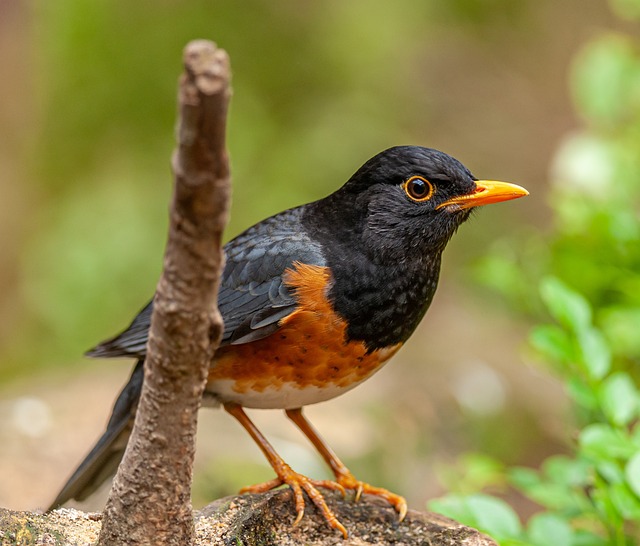Birds sport amazingly diverse beak shapes and sizes suited to their individual lifestyles. While most backyard birds have short, conical bills for cracking seeds or catching insects, some species develop extraordinarily elongated beaks reaching surprising proportions. These specialized tools equip them to access food resources other birds can’t obtain.
In this article, we’ll showcase some avian record setters packing serious beak length to reveal the incredible advantages and challenges of life with outlier extremity adaptations.
Birds With the Longest Beaks by Proportion
Several bird groups boast impressively long bills compared to their total body lengths. The following species rank among world’s most extreme proportional beaks relative to size:
Australian Pelican
Massive paddle bills measuring over 14 inches dwarf the pelican head itself in length. Unique flexible hinges let these mega-scoops flexibly scoop up entire fish while filtering water.
American Avocet
Shorebirds don’t come more stylishly equipped than American avocets. Long slender beaks arc beautifully to snag slippery worms and crustaceans across wetlands, aided by specially modified facial muscles.
Kiwi
As bizarre nocturnal ground birds, kiwis evolved starkly elongated tactile beaks. They probe soil seeking earthworms. Nostrils even migrated to the bill tip improving their sensitivity and smell locating buried bugs.
Sword-Billed Hummingbird
Tiny as they are, sword-billed hummingbirds own disproportionately long beaks surpassing total body length. This lets the petite birds access deeply cupped nectar blooms. No flower goes unexplored!
| Bird | Beak Length | Total Length | Beak Proportion |
|---|---|---|---|
| Australian Pelican | 14 inches | 5 feet | 45%+ of height |
| American Avocet | 3-4 inches | 16-20 inches | 20%+ of height |
| Kiwi | 2.5-5 inches | 12-20 inches | 25%+ of height |
| Sword-billed Hummingbird | 4 inches | 4 inches | 100% of height! |
Advantages Long Beaks Provide Birds
Lengthy specialized beaks let unique bird groups exploit food niches unavailable to shorter-billed competitors. But they come with tradeoffs as well.
Accessing Buried Food
Probing kiwis and some sandpipers have beaks perfectly purposed finding insects, worms and shellfish buried inches down. Their extra inches spare exhaustively excavating dirt.
Reaching Remote Nectar
Deep tropical flowers hold precious calories for sword-billed hummingbirds able toinsert far longer beaks than typical nectar-feeders. Longer beaks efficiently access more remote reserves.
Filter Feeding Aquatic Prey
Scooping fish and krill requires big equipment! Pelican pouches hold more thanks to stretchy skin and expandable hinged mandibles no solid bony beak could ever match.
So while long bills cause considerable headaches, their payoffs fill critical survival gaps short-billed birds just can’t physically reach.
Challenges Facing Birds With Long Beaks
But behind every great opportunity comes complications. Birds with extreme elongated beaks face issues others don’t, like:
Weight Imbalance
Disproportionate weight far from the body core strains neck muscles and makes flying clumsier. Pelicans, spoonbills and other large waterbirds especially fight heavy front-loaded beaks.
Mating Difficulties
Lengthy rigid beaks prove unwieldy and risky when breeding. Courtship feeding gets botched easily. Hummingbirds with overlong bills sometimes cannot physically mate without fatal stabbing!
Vulnerability to Injury
Thin unsupported bone and keratin structure leaves long beaks prone to cracks and fractures. A break usually proves fatal absent swift repair by experienced vets – not easy for wild birds to access!
So while rewards merit some hassle, extra long beaks still complicate lives in ways most species avoid through more modest proportions.
The Longest Absolute Beak Goes To…
Measuring the longest beak based on body ratio helps compare across diverse sizes. But which avian species claims the actual longest rigid beak structure overall by raw inch count alone?
That title belongs only to the mighty Australian Pelican!
Reaching up to 18 total inches in some big males, pelican beak length can exceed well over a foot long. The upper and lower mandible together form the longest straight non-retractable bony protrusion found anywhere among bird groups.
From their lightweight internal structure to the incredible tongue muscles controlling airflow, pelican bills represent a marvel of natural engineering fully on par with our best biomechanical designs. They remind us that innovation takes unlimited form through the lens of evolution!
Conclusion
Bird beaks span a spectrum from tiny hummer tips to giant pouches rivaling whole chihuahuas in size. But while pelicans may claim top length honors, proportionally tiny sword-bills no doubt inherit the overall crown for successfully packing absurdly overlong beaks onto frames weighing just a couple grams! No matter the record judged, these extreme adaptations remind us that nature always finds opportunity filling niche space wherever competition lags.millimeters matter separating feast from famine out on evolutionary frontlines!
Frequently Asked Questions
How do birds fly properly with heavy long beaks?
Specialized facial muscles, hinges, and lightweight internal structure help offset some imbalance issues from elongated beaks. Pelicans also exploit thermals, taking running starts or scrambling over water initially to get airborne.
Why are long thin beaks more vulnerable to damage?
Lengthy protrusions concentrate force risk with minimal structural support. Thin terminally grasping bills of birds like ibis lack hardy coverlets shielding crack-prone bone and soft keratin edges at their furthest reaching tips.
Do mating issues plague all birds with long beaks?
Species like avocets and storks adapted by evolving bendable bill tips specifically preventing injury. However inflexible terminally long bills on certain hummingbirds and other groups still interfere dangerously with mating capacity.
What unique tools help kiwis probe the ground so effectively?
Oversized nostrils migrate to bill tips in kiwis maximizing their tactile sensitivity and ground scent detection. Densely packed facial bristles also help probe and track prey movements. Their beaks form highly specialized sensory organs!
Could pelicans or other birds evolve even longer beaks over time?
For large aquatic filter feeders, longer mandibles improve intake capacity up to a point before excessive tissue maintenance costs would overwhelm any gains. 18 inches approaches plausible performance limits before tradeoffs overtake benefits on net energy budgets. Evolution already progressed them astonishingly far!



